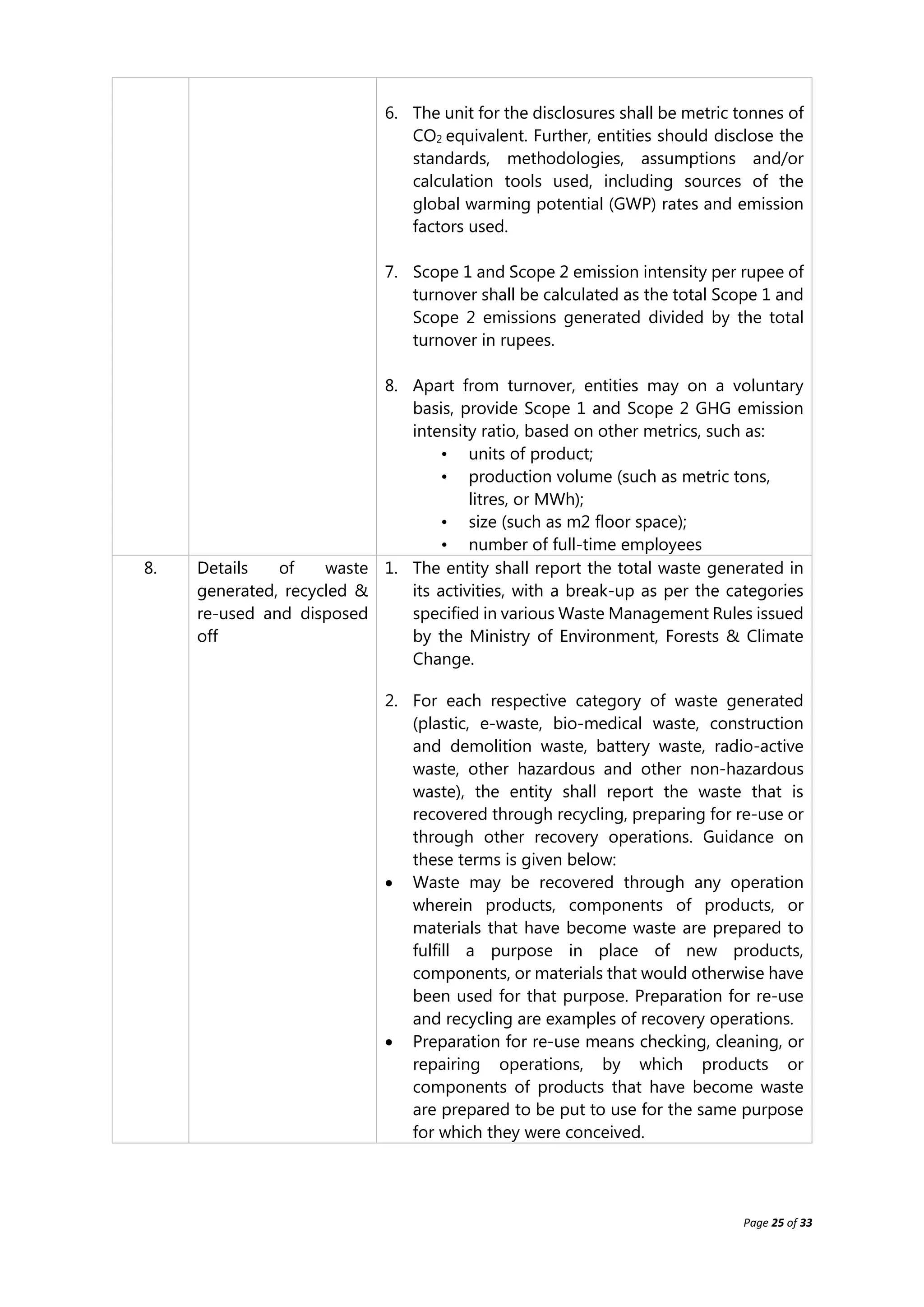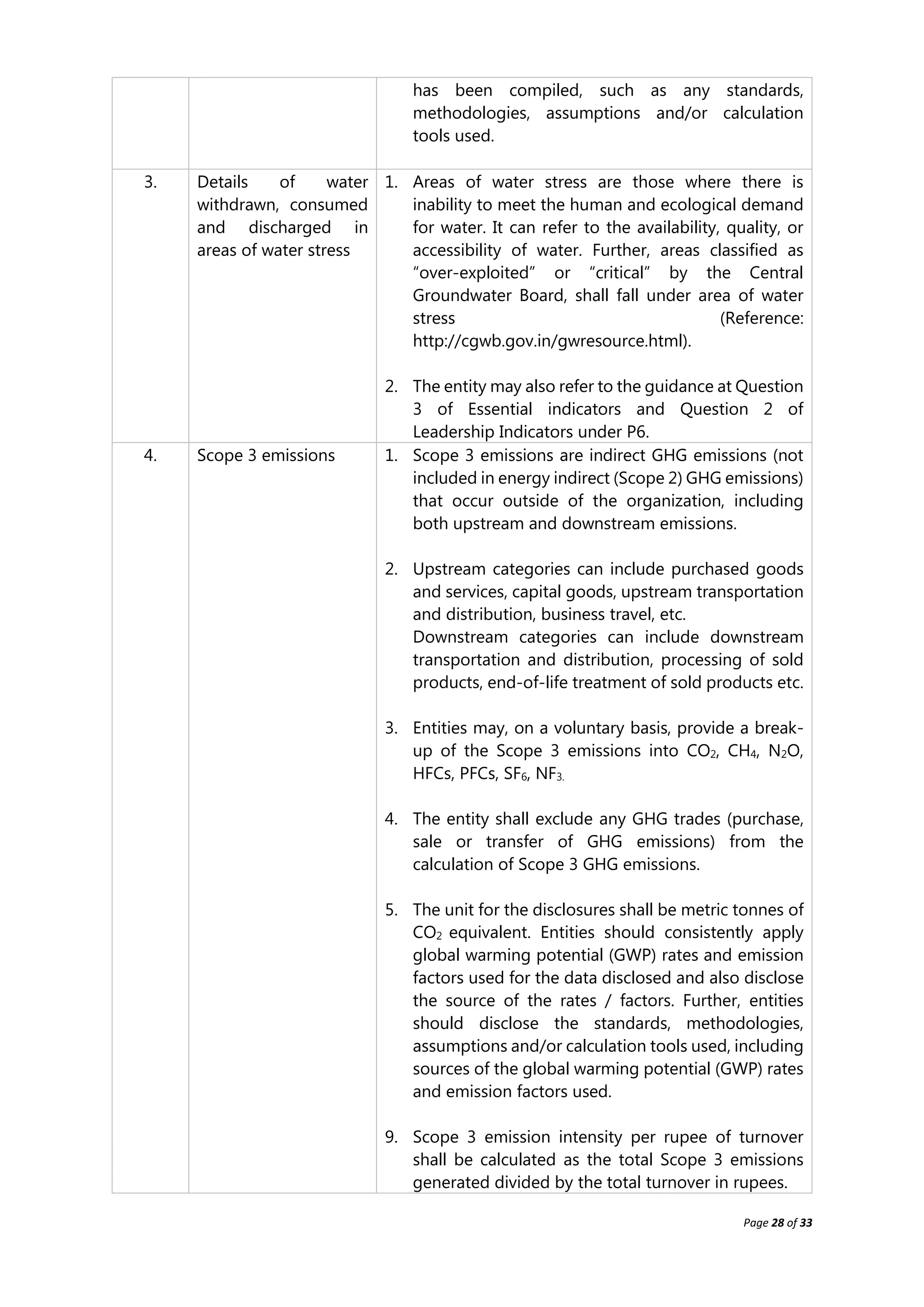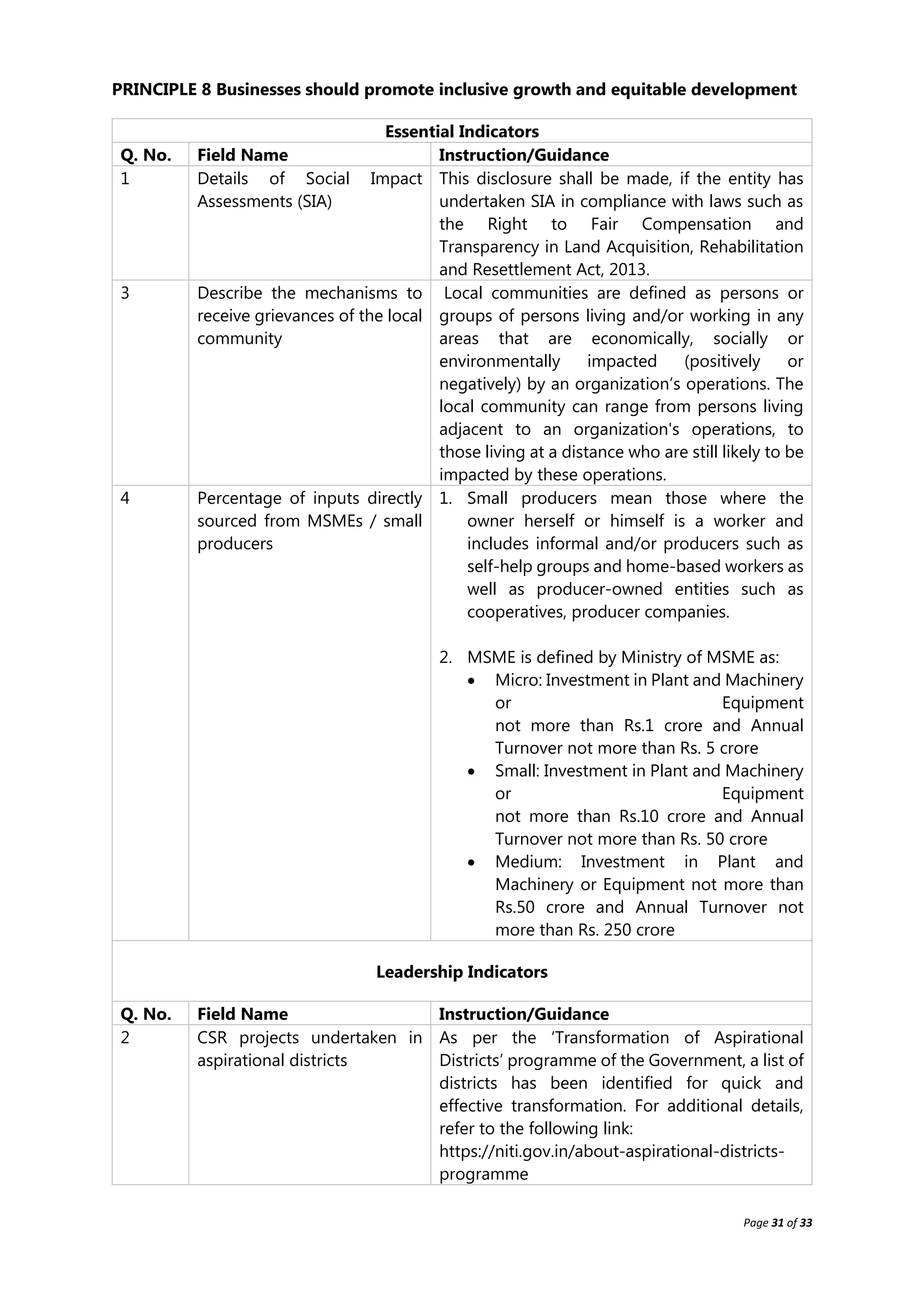The document provides guidance for business responsibility and sustainability reporting, emphasizing the importance of interoperability with existing frameworks, consistency in reporting boundaries, and applicability to various industries. It outlines specific disclosures required, including employee demographics, grievance mechanisms, material sustainability issues, and commitments against established principles. Additionally, entities are encouraged to provide clear, concise responses and may cross-reference information disclosed in other reports to avoid duplication.

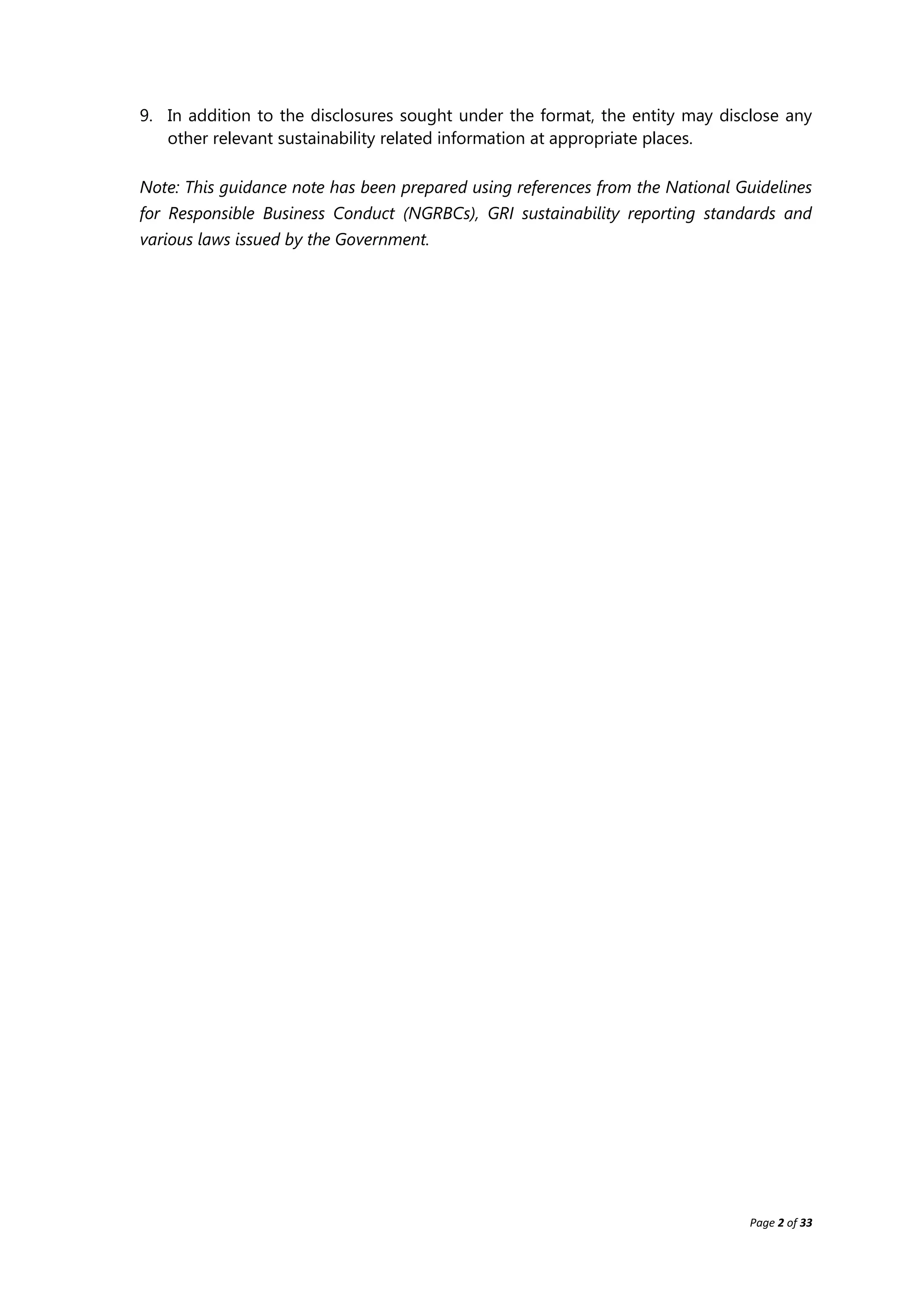





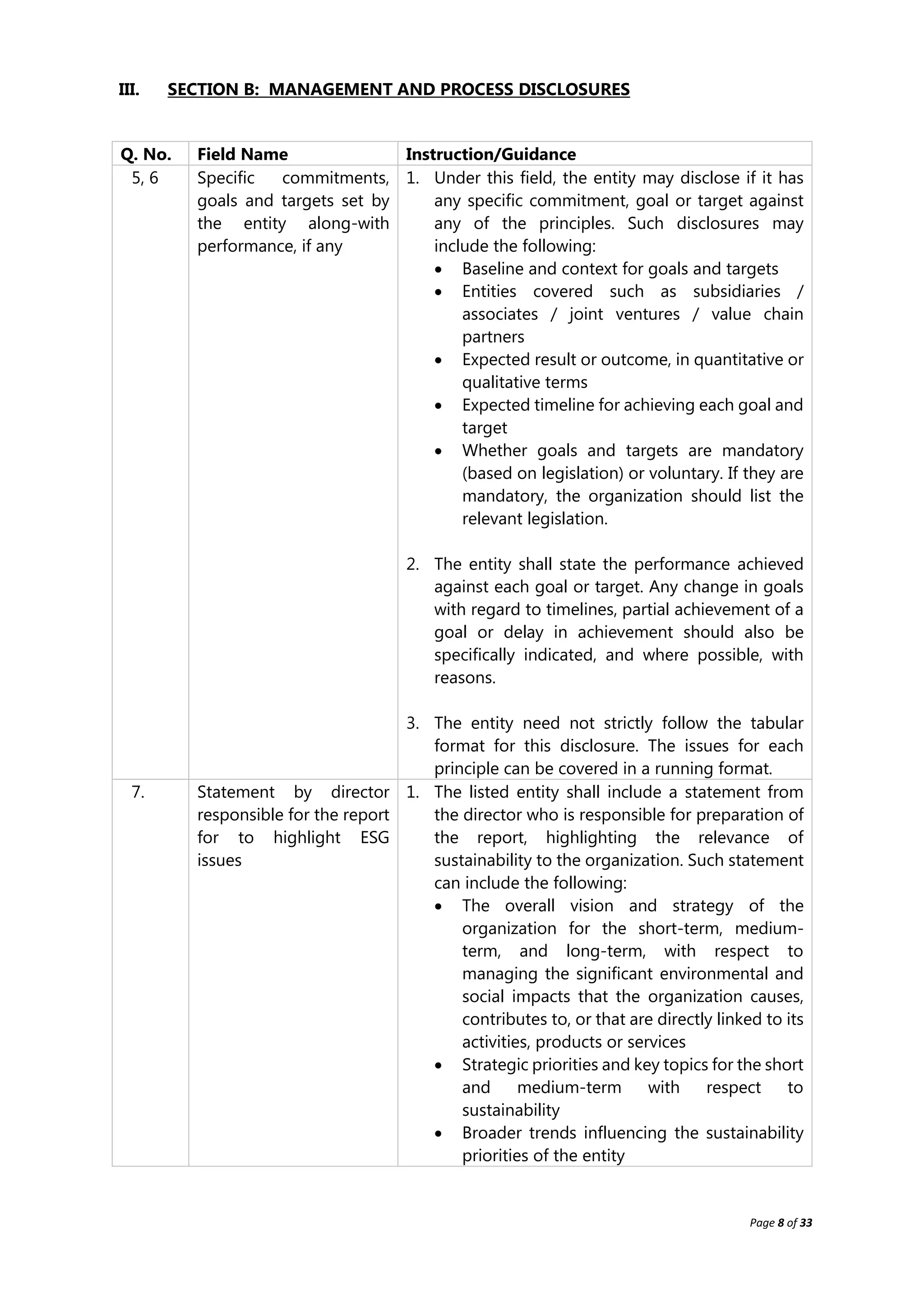


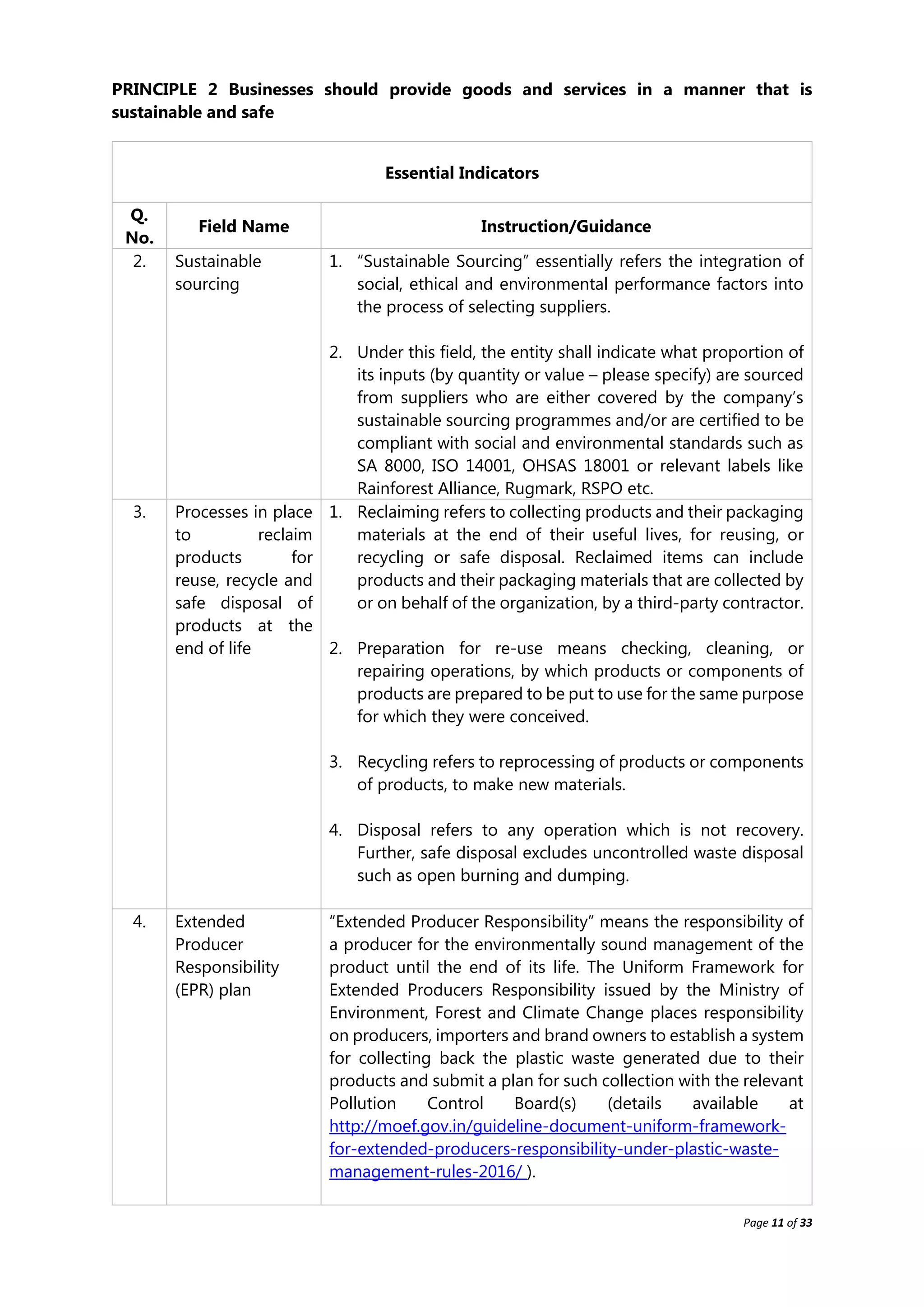
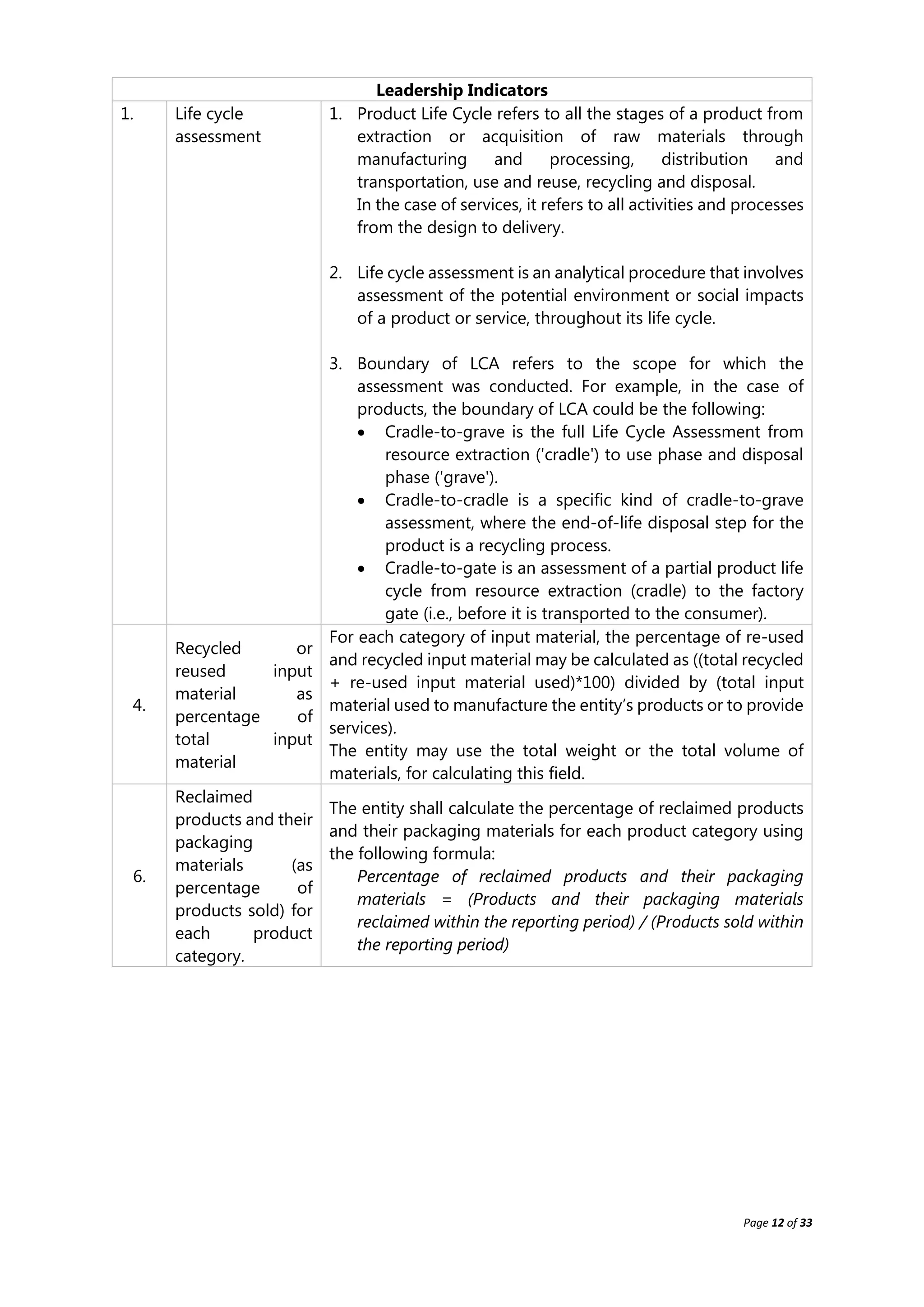




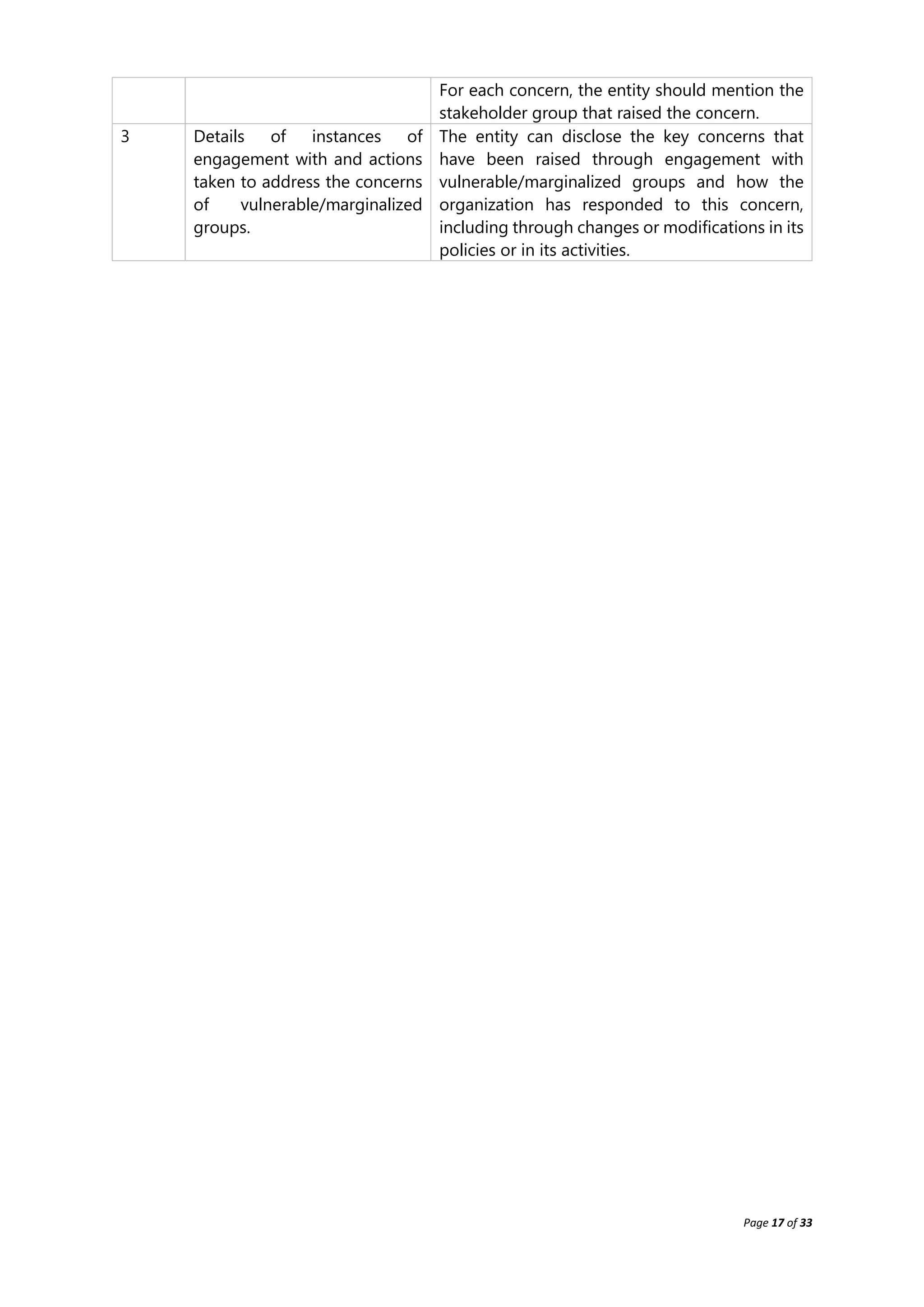



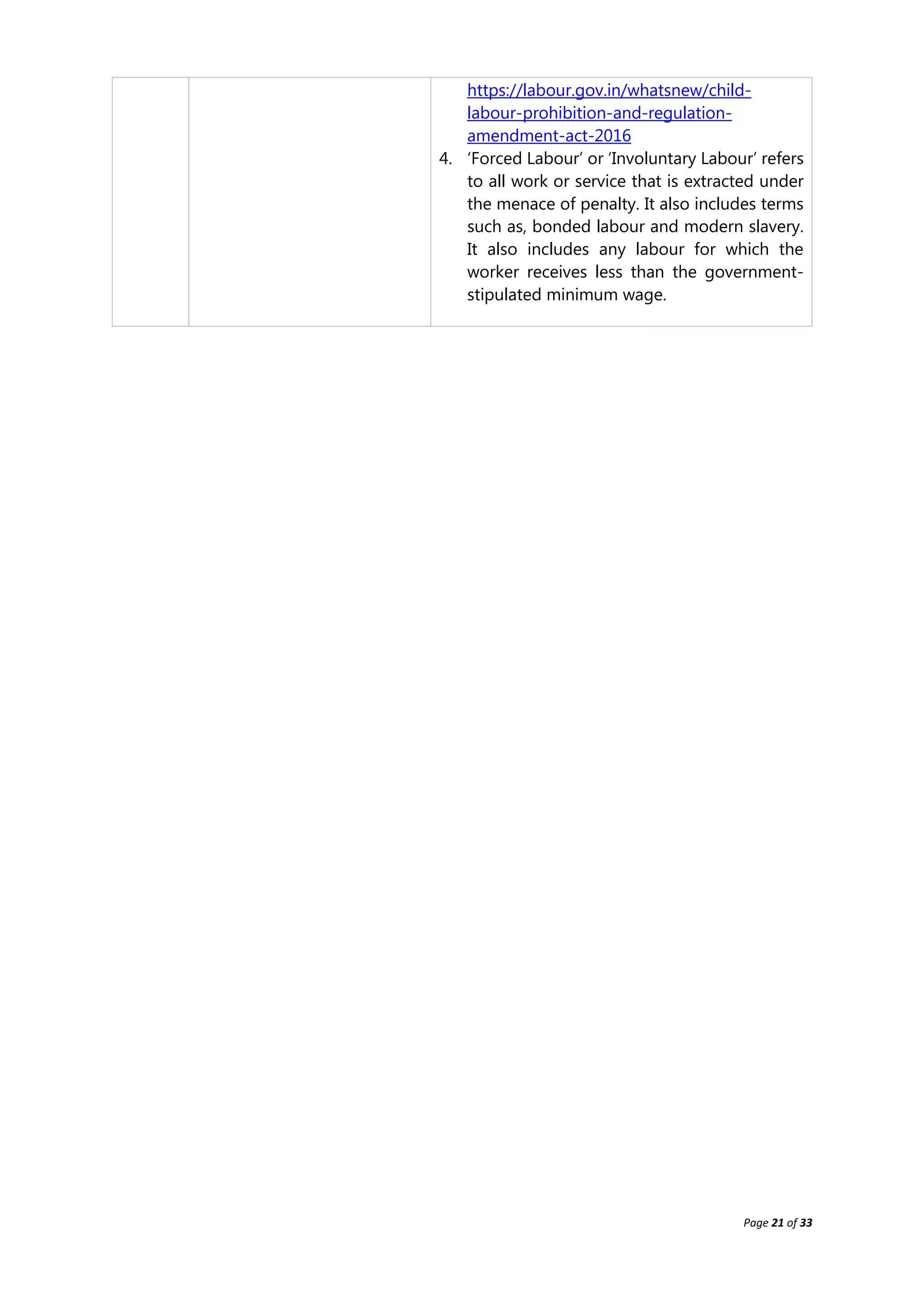
![Page 22 of 33
PRINCIPLE 6 Businesses should respect and make efforts to protect and restore the
environment
Essential Indicators
Q. No. Field Name Instruction/Guidance
1. Details of total energy
consumption and
energy intensity
1. The entity shall report the total electricity consumed,
fuel consumed and energy consumed from other
sources during the reporting period, as applicable.
Entities may also specify the other sources, in case
the same are significant.
2. Energy can be purchased from sources external to
the organization or produced by the organization
itself (self-generated). If the organization generates
electricity from a non-renewable or renewable fuel
source and then consumes the generated electricity,
the energy consumption shall be counted only once.
3. The above data shall be reported in terms of Joules
or multiples such as Giga Joules. Entities should
consistently apply conversion factors, for converting
fuel consumption into Joules, for the data disclosed.
In case, different standards and methodologies are
used, the same should be disclosed. Entities should
also disclose any contextual information necessary
to understand how the data has been compiled, such
as any standards, methodologies, assumptions
and/or calculation tools used.
4. Energy intensity per rupee of turnover shall be
calculated as the total energy consumed divided by
the total turnover in rupees.
5. Apart from turnover, entities may on a voluntary
basis, provide energy intensity ratio, based on other
metrics, such as:
• units of product;
• production volume (such as metric tons,
litres, or MWh);
• size (such as m2 floor space);
• number of full-time employees
2. PAT scheme of the
Government of India
Perform Achieve and Trade (PAT) scheme (“Scheme”)
has been launched by Bureau of Energy Efficiency under
the National Mission for Enhanced Energy Efficiency
(NMEEE) [details available at the following link:
https://beeindia.gov.in/content/pat-3]. Under the
Scheme, certain sites / facilities are identified as](https://image.slidesharecdn.com/brsrlite-220302105938/75/Brsr-lite-22-2048.jpg)


